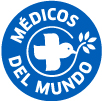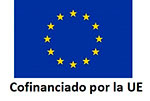The history of humanity is a history of people on the move. Societies are built and rebuilt with population flows that make economies and cultures grow. There are those who travel to seek refuge, those who seek a life less impoverished and with more professional opportunities, and there are also those who move every day to make the world a fairer place, where borders do not become mass graves.
Because migration is not just a right, it is a global response to many of the problems of our time.
This is a visual tale of 20 years of travel towards Europe across the Mediterranean, documented by the lenses of the photographers selected by the Luis Valtueña Award.
What does migrating mean? Who migrates?
One out of every 30 people in the world is a migrant.
But if you think about how migration is defined by the International Organization for Migration (IOM), almost all of us are migrants: a migrant is a person who moves away from his or her place of usual residence, whether within a country or across an international border.
2000
Tarifa, Cadiz. Following an inadequate institutional response, residents and members of the Civil Guard assist migrants in a personal capacity. The people in the photograph come from Sierra Leone, fleeing war.
Migrating ought not to have negative connotations. In 2020, 281 million people went to live in another country, compared to 128 million in 1990.
2001
Tarifa, Cadiz. In this image, two sub-Saharan men lift a pregnant companion, who is exhausted after her journey, out of the water. The highest numbers of migrants reached the shores of Cadiz between 2001 and 2004 (these numbers were only surpassed in 2018).
Women, girls, and LGTBQ persons have the added risk of suffering sexual assaults, forced prostitution, or people-trafficking, both during the journey and in their country of refuge.
In August 2001, during one of the peaks in migrant arrivals in Spain, two hundred of them gathered in a square in Barcelona demanding better treatment. Episodes of police brutality ensued during the attempts to disperse them, and some 60 people were arrested.
Did you know that the most dangerous migratory route in the world is the Central Mediterranean route (from Libya to Italy?
Over 23,000 people have died or disappeared since 2014 trying to reach Europe by sea, most of them via the Strait of Sicily (almost 17,800), followed by the Western Mediterranean route towards Spain (2,300) and the Aegean route (1,700).
2003
A Civil Guard assists some migrants in Tarifa, Cadiz, during the summer of 2003. It is estimated that some 15,000 people lost their lives in the Straits of Gibraltar between 1993 and 2003.
Although many manage to arrive, the number who die in the sea is huge. Some of the bodies found on the beaches were buried in local cemeteries with the inscription ‘anonymous immigrant’.
2004
A family member weeps at the tomb of a deceased migrant who died when a dinghy sank off the coast of Fuerteventura, Canary Islands.
As from 2004, the largest maritime migration flows towards Spain have been towards the Canary Islands, with lower numbers towards the south of Andalusia. From the first young men from the Sahara, who could do the journey in less than 24 hours, we now see migrants from Senegal or Conakry who take over a week to reach the islands in canoes, sometimes crowded with up to 200 people on board.
2005
Monte Gurugu, in Morocco. Every night young African migrants attempt to scale the border fence using ladders they have made for themselves from tree branches.
Did you know that the majority of the world’s migrants live in Europe?
Followed by Asia (30%), América del Norte (21%), Africa (9%), America Latina y Caribe (5%) y Oceania (3%).
Fuente: Informe sobre las migraciones en el mundo 2022 (iom.int)
2006
A humanitarian-aid organization looks after migrants who have survived a shipwreck following their arrival at Los Cristianos port in Tenerife (Canary Islands) in August 2006, at the height of the ‘small boats crisis’.
Did you know there is an Olympic team of refugee athletes?
The Refugee Athletes Olympic Team (identified with the code EOR) is one of the delegations taking part in the Olympic Games. It was set up by the Executive Committee of the International Olympic Committee (IOC) on 2 March 2016, and competed for the first time in the Rio de Janeiro Olympic Games. At the Tokyo Games they were at the centre of global attention. The team had members from 11 countries, including Syria, South Sudan, Iran, and Afghanistan.
2008
Montera Street in Madrid is an important shopping area full of people trying to make a living in the face of wide social inequalities. As in other European cities, migrants in Madrid face structural barriers that hinder their integration.
11.4% of the people living in Spain – fewer than 5.5 million out of a population of over 47 million – were not born in Spain. This figure includes those who come from African countries and those who come from the United Kingdom, for example.
2009
Towards the end of the first decade of the century, the Aegean Sea, which separates Greece and Turkey, became one of the main access routes for migrants and refugees hoping to reach Europe. This image shows those hoping to reach the coast held at gunpoint by the nocturnal maritime patrols.
Travelling around the world ought to be a safe journey. There are international agreements to protect the rights of migrants and refugees. For example, the New York Declaration, which emphasizes the need for them to travel in safety and for lives not to be lost. But texts such as this are normally not worth the paper they are written on, and sink without trace.
2010
In 2010, the Italian town of Rosarno became known for the racial violence that erupted there, at a time when many African migrants were being exploited in the fields of Calabria. From one day to the next 2,000 of them were evacuated to other parts of the country.
¿Sabías que porcentaje de los bulos desmentidos en España en 2020 tenía que ver con migraciones?
¡Casi el 70%! Hay entidades, como Maldita o Newtral, que se dedican a desmentir las fake news (bulos). Son una forma más de averiguar si lo que te llega por el chat de WhatsApp es verdad.
2011
In this image, we see Sudanese immigrants attempting to stow away on a lorry near the Greek port of Patras hoping to flee to other parts of Europe by clinging to the underside of the trailer. They take advantage of the few seconds the lorry has to wait at traffic lights.
The militarization of the ports and the patrols by the Coast Guard and the Police in European countries force migrants to seek increasingly hazardous ways of carrying on their journey.
2012
In 2010 the French government issued expulsion orders for hundreds of migrants from Romania and Hungary living in camps. A family that has received an expulsion order answers a phone call. Soon after they were escorted to the Belgian border by the police.
Summary returns contravene international law. Under International Law, States are prohibited from expelling, returning, or extraditing persons to the territory of any country where their life or freedom is under threat. This also applies to the expulsion or return of persons to a country from which they may be expelled or returned to a third country where they could face a real threat.
2013
A female migrant is attended to at the Association for the Fight Against AIDS in Rabat, Morocco. Some migrants decide to spend some time in this North-African country in order to earn some money with which to help their families, while they wait to be able to continue their journey towards Europe.
Development is not possible without migrants. Many studies have found this and it is also acknowledged by the 2030 Agenda for Sustainable Development. A large part of the economy depends on migrants, both where they live, which is where they spend 85% of their income, and in their countries of origin, where they send millions of dollars every year in remittances.
2014
Scaling the border fence in Melilla. This image shows the contrast between the rich world, represented by a gleaming golf course located on the border and paid for with European funds, and the poor forgotten part of the world that migrants escape from.
Opposition to migration has grown in recent years. In Spain, immigration is now ranked 16th out of the 60 greatest concerns for the population.
2015
Afghan and Syrian refugees disembark on the Greek island of Lesbos. Thousands of people cross the 10 kilometre stretch of sea that separates the Turkish coast from the north of the Greek island, endangering their lives on board unsafe plastic boats. They pay at least 1,100 euros for the crossing.
Towards the end of 2015, salvage operations were intensified following the increase in deaths in the Aegean Sea. In 2016 the press referred to the Mediterranean as ‘the sea of the 5,000 dead’.
2016
A woman gives her child a bath in the middle of a field. The child has had all his hair cut off because of lice. Idomeni, Greece, 2016.
Child migrants are doubly vulnerable. States and people in general should not forget that over and above being migrants they are children first, and so protected by the United Nations Convention on the Rights of the Child.
¿Sabías que en España hay aproximadamente 470.000 personas en situación administrativa irregular?
De las cuales un tercio (150.000) serían menores de edad, niñas, niños y adolescentes en esta situación de vulneración, sin protección legal y acceso a derechos y servicios esenciales.
Fuente: Fundación PorCausa
2017
Malick poses in his room at a temporary accommodation centre for asylum-seekers. He is holding a photograph of himself taken on 2 August 2016, minutes after being rescued from the waters of the Mediterranean. His country of origin, Gambia, is the smallest in continental Africa, and yet it generates some of the highest numbers of migrants.
In late 2021, over 89 million people were in a situation of being forcibly displaced from their homes.
2018
Family members weep at Zohra’s coffin, whose body was repatriated after losing his life in the Straits of Gibraltar while crossing to Europe in an inflatable boat.
Over 60,000 migrants have lost their lives or disappeared in the Mediterranean trying to reach Europe since 2000.
2019
Border on El Tarajal Beach, Fuerteventura (Canary Islands), March 2019.
In September 2019, the proportion of people citing immigration as one of the main problems facing Spain reached 15.6%, when in June 2018 this figure was just 3.5%.
Why is migration considered to be a problem?
Because of partisan hate-fuelled rhetoric and disinformation. They lie and spread fear in order to generate conflict between people who are neighbours. This has led to a rise in offences related to racism and xenophobia. In Spain, 4639 offences of this kind were recorded in 2021, an increase of 31.75%.
Los inmigrantes viven buscando ayudas
Las personas extranjeras no reciben ayudas por el hecho de serlo, necesitan tener una residencia legal para poder optar a ellas, aunque sí se les puede ofrecer ayuda humanitaria.
Las personas migrantes colapsan el sistema sanitario
En 2017 el 36,1% de las consultas médicas fueron a españoles frente a un 31,3% a extranjeros.
Las personas extranjeras aumentan la delincuencia
De las cerca de 90.000 infracciones producidas en las Islas Canarias en los últimos 4 años, solo 122 fueron causadas por inmigrantes.
Nos quitan el trabajo
Las personas extranjeras representan solo el 17% de la población económicamente activa en España. Actualmente, la población migrante aporta más de lo que recibe del Estado.






